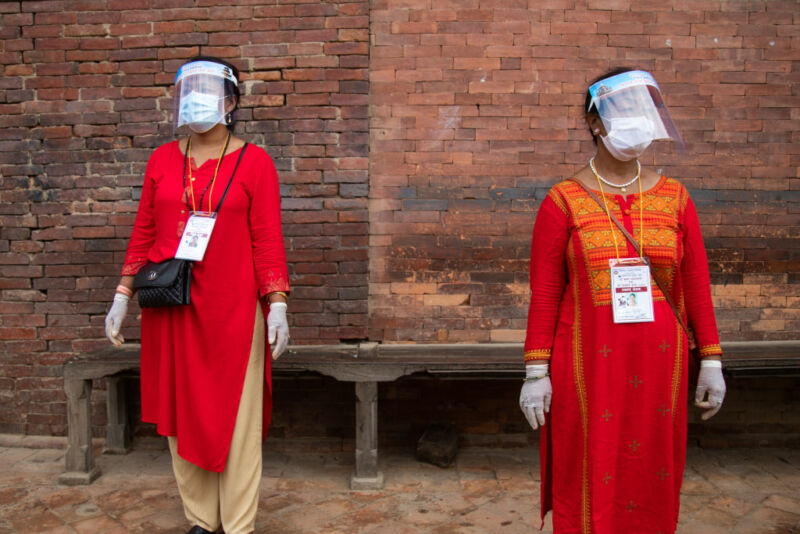Shields up —
They made a big difference for people meeting with families of the infected.
John Timmer
–

Enlarge / A mask/shield combination provides enhanced protection.
One of the biggest challenges of the COVID-19 pandemic is that we simply don’t know what works against the SARS-CoV-2 coronavirus. Most of the scientific studies on controlling pandemics have been focused on the influenza virus, which is distinct from the coronavirus in a lot of ways. The coronaviruses we do know something about—SARS, MERS, and two cold viruses—are quite different from each other.
We’re left without hard data on what works. Do we need two meters of social distancing or three? What types of face masks are most effective? We’re trying to gather data on these issues at the same time that we’re implementing them. So in a small bit of good news, we now have some data indicating something that’s effective: plastic face shields.
To the subcontinent!
The work was done in India and takes advantage of a public health program initiated as the pandemic spread through that country. Workers in a research network in Chennai agreed to voluntarily go into isolation, then visit with the families of those who had tested positive for SARS-CoV-2 in order to explain things like quarantining, mask use, social distancing, and so on.
Before going into what happened to these workers, we should step back to admire these people. They agreed to leave their families behind in order to live in hotel rooms. They were kept completely isolated from their friends and peers—meals were delivered to their rooms, and even their transport was a van with a steel divider installed to keep them isolated from their driver. All of their direct contact with humans was with people who were likely to have been infected. While the families they visited were asked to wear masks and stay at least six feet away from health workers, compliance was erratic.
And while they were given gloves, surgical masks, and alcohol hand sanitizer, it took only two weeks for the first workers to develop symptoms. The program was suspended, and all the workers were tested for the virus. Of the 62 involved, a dozen had been infected. Collectively, they had visited 5,880 homes and come in contact with a total of 222 people who ultimately tested positive for the virus. Fortunately, the partitions in their transport worked, and none of their drivers ended up infected.
Restart
When the program was restarted, an additional form of protection was put in place: a clear plastic face shield. The health workers were also given ethanol to clean their shields between home visits. With those measures in place, the workers visited an additional 18,228 homes, in which 2,682 people eventually tested positive for the virus.
There were zero infections among the healthcare workers.
It’s entirely possible that the initial infection heightened the sense of caution the workers took when the program restarted. But it’s not clear whether any behavioral changes could be maintained over the course of 18,000 home visits. Thus, the face shields are likely what provided the critical difference.
The authors of the paper describing the results aren’t sure what the critical contribution was. The shield could have diverted air around the face or prevented the face mask from getting contaminated. It would also provide some protection for the eyes, which are a known route of infection. So there’s still more we could learn here. But the results seem to be enough to indicate that high-risk individuals could benefit from using face shields.
JAMA, 2020. DOI: 10.1001/jama.2020.15586 (About DOIs).
Corrections: Slight change to the title, because people found it confusing. Corrected one mask/shield error.

